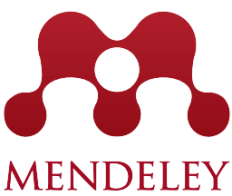Analysis of Threshold Angle Variations on The Quality of Finishing Free-form Surface in CNC Milling Process
Abstract
The machining process using a combination of steep and shallow strategy is the most widely used strategy for the finishing process on complex models that have many areas of steep walls and shallow floors. Using a single machining strategy on the entire model can lead to long machining times and poor surface finish quality. The steep and shallow strategy can efficiently detect parts of the model that have steep contours and those that have shallow contours. In other words, this strategy can analyze the model surface angle at runtime to identify and divide the machining zone based on the slope angle or commonly called the threshold angle. In this context, the selection of the threshold angle is very important when carrying out the finishing process on free-form surfaces to produce a good surface quality. This study was conducted to determine the optimum threshold angle that can produce the minimum surface roughness between steep areas and shallow areas. Threshold angles that were varied were 20°, 30° and 40°. Machining was carried out using Ballnose type cutting tools with a diameter of 6 mm. Then the stepover and stepdown is 0.1 mm for the finishing process on the surface of the propeller product made of Aluminum by using a CNC Milling machine. From the experimental results, the most optimum threshold angle is at an angle of 40° with an average roughness value in the steep area of 1.9 mm and in the shallow area of 1.3mm and a total average roughness of 1.6mm.
Full Text:
PDFReferences
J. Balic, M. Korosec, Intelligent tool path generation for milling of free surfaces using neural networks, International Journal of Machine Tools and Manufacture, 42, 10 (2002) 1171-1179.
A. M. Ramos, C. Relvas, J. A. Simões,The influence of finishing milling strategies on texture, roughness and dimensional deviations on the machining of complex surfaces, Journal of Materials Processing Technology, 136 (2003) 209-216.
Y. Quinsat, L. Sabourin, C. Lartigue, Surface topography in ball end milling process: Description of a 3D surface roughness parameter, Journal of Materials Processing Technology, 195 (2008) . 135-143
Y. Quinsat, S. Lavernhe, C. Lartigue, Characterization of 3D surface topography in 5-axis milling, Wear, 271 3-4 (2011) 590-595.
B. Mikó, Study of z-level finishing milling strategy, Development in machining technology , (2012) 83-90.
A. Mgherony, G. Farkas, B. Mikó, Comparison of Surface Roughness When Turning and Milling, Periodica Polytechnica, Mechanical Engineering, (2021) 337–344.
J. M. Redonnet, A. G. Vázquez, A. T. Michel, S. Segonds, Optimisation of free-form surface machining using parallel planes strategy and torus milling cutter, Proceedings of the Institution of Mechanical Engineers, Part B: Journal of Engineering Manufacture, SAGE Publications, 2016, 232 (2) 240-250.
C. Vilaa, C. Ayabacaa, R. Torresa, S. C. Gutiérreza, A. Meseguera, X. Yanga, Analysis of Different Tool Path Strategies for Free Form Machining with Computer Aided Surface Milling Operations, Procedia Manufacturing 41 (2019) 843–850
DOI
https://doi.org/10.21107/ijseit.v6i2.14952Metrics
Refbacks
- There are currently no refbacks.
Copyright (c) 2022 Dhika Aditya Purnomo, Fipka Bisono, Rizal Indrawan

This work is licensed under a Creative Commons Attribution-ShareAlike 4.0 International License.




















